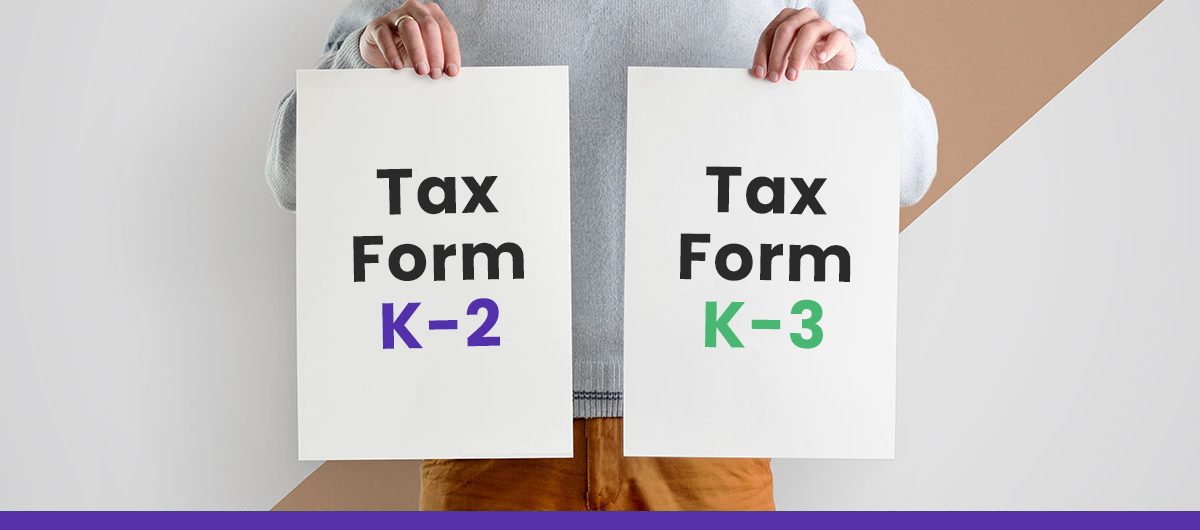Your Detailed Guide to K-2 and K-3 Tax Forms

10 Reasons Your Business Needs a Full Charge Bookkeeper
November 29, 2023
What’s the Difference between 1099-NEC and 1099-MISC? What’s the Deadline to File 1099s?
January 9, 2024Your Detailed Guide to K-2 and K-3 Tax Forms
Tax season can be a disorienting time for many, where you feel like you’re faced with an alphabet soup of forms and numbers. If you’ve heard whispers of K-2 and K-3 tax forms and are wondering what they’re all about, you’ve come to the right place.
In this blog, we’ll explain these forms and clarify their concepts, exploring what they are, why they matter, and how they may impact your tax situation.
Understanding K-2 Tax Forms
What are K-2 Forms
The K-2 form is part of the broader tax landscape, specifically associated with partnerships. If your business is involved in a partnership, whether as an investor or partner, you are likely to encounter the K-2 form eventually.
In simple terms, the K-2 is like a snapshot of your share of the partnership’s income, deductions, and credits. It’s the paperwork that communicates your piece of the financial pie.
Why does it matter, you ask? Well, tax authorities need to know how much income you earned through the partnership. The K-2 form helps streamline this information, making the filing process smoother for everyone involved.
What Information do K-2 Forms Contain?
The K-2 form is not as intimidating as it sounds. It typically includes your share of the partnership’s:
- Income: This is the money the partnership earned during the tax year.
- Deductions: These are expenses the partnership incurred, and you get to claim a share of them.
- Credits: If the partnership is eligible for any tax credits, you’ll find your portion of those on the K-2 as well.
Essentially, the K-2 is a document that keeps you in the loop about the financial performance of the partnership. You’ll use the information from your K-2 when completing your individual tax return.
Understanding K-3 Tax Forms
What are K-3 Tax Forms
Now that you’re familiar with the K-2 tax form, let’s explore the K-3 tax form. The K-3 is K-2’s counterpart when it comes to S corporations. Similar to the K-2, the K-3 is all about providing you with the essential financial details to complete your individual tax return.
In a nutshell, the K-3 form outlines your share of the S corporation’s income, deductions, and credits. It serves the same purpose as the K-2 but in the context of S corporations. If you’re a shareholder in an S corporation, the K-3 is your gateway to understanding your slice of the financial action.
What Information do K-3 Forms Contain?
Similar to the K-2, the K-3 covers:
- Income: Your share of the S corporation’s earnings.
- Deductions: Your portion of the S corporation’s expenses that you can claim.
- Credits: Any tax credits the S corporation is eligible for, you’ll find your share detailed on the K-3.
Understanding the Relationship between K-2 and K-3 Tax Forms
So, why are there two different forms for seemingly similar purposes? The answer lies in the distinct tax structures of partnerships and S corporations.
Partnerships and S corporations are both pass-through entities, meaning they don’t pay income tax themselves. Instead, their income, deductions, and credits “pass through” to the individual partners or shareholders. The K-2 and K-3 forms help to facilitate this process by documenting each individual’s share of the financial aspects.
User-Friendly Tips for Handling K-2 and K-3 Tax Forms
- Keep it organized: Create a dedicated folder for all tax-related documents, including your K-2s and K-3s. Staying organized will save you time and minimize stress when it’s time to file.
- Understand your investments: If you’re a partner or shareholder, take the time to understand your investments in partnerships or S corporations. Knowing how these entities operate will help you make sense of the information on your K-2 and K-3 forms.
- Consult a professional: If the world of tax forms still seems like a foreign language, don’t hesitate to seek professional help. Tax professionals can provide personalized advice based on your unique situation, ensuring you’re making the most of your financial opportunities.
- Plan ahead: Don’t wait until the last minute. Start gathering your tax documents early, and if you have any questions about your K-2s and K-3s, reach out to the partnership or S corporation for clarification.
Congratulations! You’ve Just Graduated From the K-2 and K-3 Tax Form School.
While these forms may seem like formidable foes, understanding them is a crucial step towards mastering your tax responsibilities. Remember, tax season doesn’t have to be a daunting experience. With a bit of knowledge and preparation, you can navigate the world of K-2s and K-3s with confidence, ensuring a smoother journey towards financial success.
Also Read: Startup Tax Filing – Things You Need to Know In 2021
Farwah Jafri
Farwah Jafri is a financial management expert and Product Owner at Monily, where she leads financial services for small and medium businesses. With over a decade of experience, including a directorial role at Arthur Lawrence UK Ltd., she specializes in bookkeeping, payroll, and financial analytics. Farwah holds an MBA from Alliance Manchester Business School and a BS in Computer Software Engineering. Based in Houston, Texas, she is dedicated to helping businesses better their financial operations.




